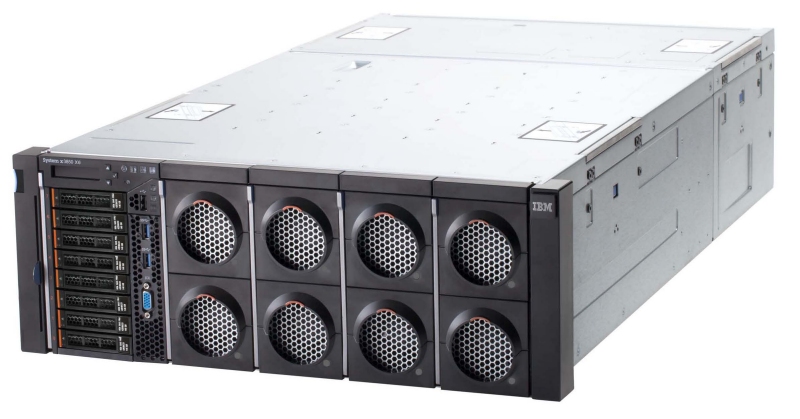IBM X6 Announcements!!
IBM today announced its new X6 architecture for high-end, scale-up servers in its System x line of x86 compute platforms. According to IBM's press release, this means a refresh for the x3850/x3950 4-8 socket rack server models, as well as a NEW x880 Flex node, which will most likely be a duplicate of these servers but specifically designed for a Flex System chassis.
With a large number of our clients having already invested in a Flex System strategy, we are particularly excited about the idea of applying X6 to a Flex-based strategy, specifically in the areas of high-throughput applications (like backups, etc.), highly consolidated virtualization environments, and very high performance database servers. Combined with the extreme investment protection and backend bandwidth potential of the current Flex technology, we think that the compute portfolio with Flex is now complete with literally something leading-edge and unique for everyone and every type of application.

Since I know you know how to use Google, I won't re-hash the exact word-for-word details of the announcement, but here are some of the announcement highlights we, personally, find interesting:
- X6 in Flex: No exact details yet, but the implied assumption with this announcement is that there will be an 8-socket Flex node (x880 according to the announcement) that will support 12TB of memory and a significant amount of backend bandwidth for network and SAN to the integrated Flex switches. This will allow enable applications like massive TSM or other types of backup servers that previously had to be standalone due to I/O requirements to be part of a consolidated Flex strategy.
- eXFlash DIMMs: Flash-based memory-like DIMMs that are installed natively on the memory channel itself, which represents an advantage over PCIe based Flash deployments today. The bottom line here is extreme performance and the lowest latency possible... if your application is very performance sensitive from an IOPS perspective, this will greatly benefit you (thinking massive VM farms or large Oracle/SQL deployments)
- Compute books: Each of the 8 possible CPUs and its corresponding memory are modular and can be added and removed, as needed. This means that you can start small, if you'd like, and grow exactly as you need. We're really interested to see what the entry-level pricing looks like for the smallest configuration looks like, but this strategy looks very promising for those clients that may want to grow into X6 slowly.

As we hear more specifics on the roll out of actual products, I'm sure we'll be adding more thoughts to this blog!
